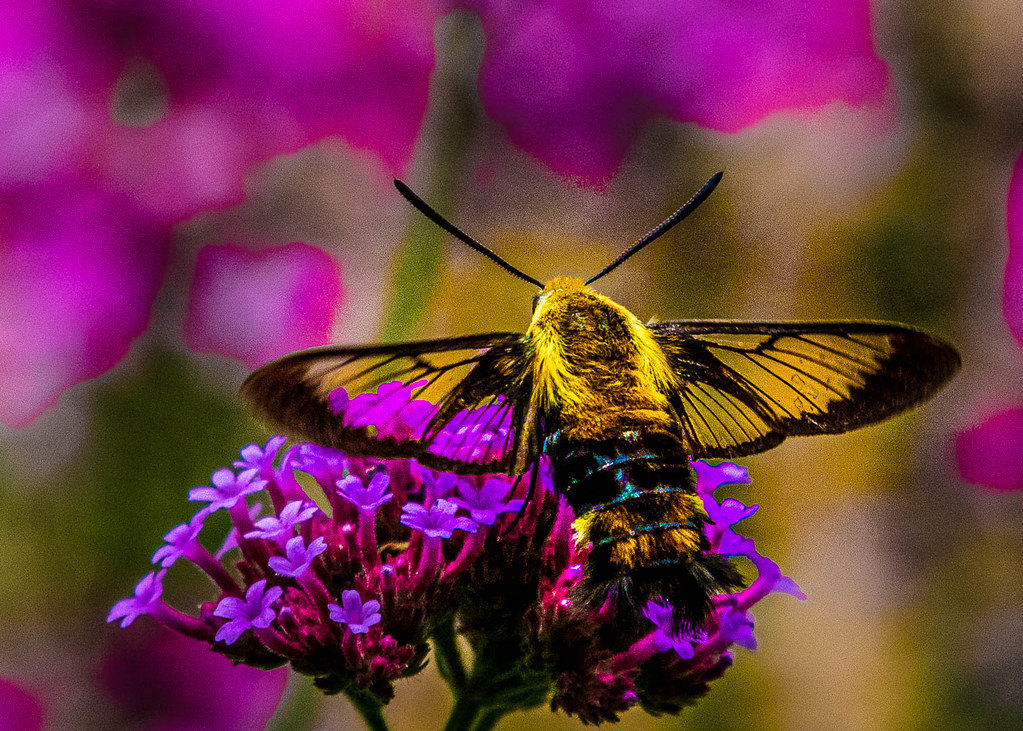You’re sitting in your garden, watching the flowers dance in the afternoon breeze, when suddenly a tiny creature zips past your face. It hovers at a bright red bloom, its wings beating so fast they’re just a blur, and you think to yourself – there’s a hummingbird! But wait, something feels off. The body looks a bit too fuzzy, the movements slightly different. You lean closer, squinting, and realize you’ve just witnessed one of nature’s most incredible cases of mistaken identity.
The Great Impersonator of the Insect World

Meet the hummingbird clearwing moth, a creature so convincing in its hummingbird impression that even experienced nature watchers do double-takes. This remarkable insect has mastered the art of mimicry to such a degree that it regularly fools humans, predators, and even other insects. The moth’s scientific name, Hemaris thysbe, might sound intimidating, but locals often call it the “hummingbird moth” or “bee moth.”
What makes this deception so effective is the moth’s uncanny ability to replicate nearly every aspect of hummingbird behavior. It feeds during daylight hours, hovers at flowers with surgical precision, and even produces a similar humming sound with its rapidly beating wings. The resemblance is so striking that many people spend years thinking they’re watching tiny hummingbirds in their gardens, never realizing they’ve been observing one of nature’s most talented mimics.
Physical Features That Fool the Eye
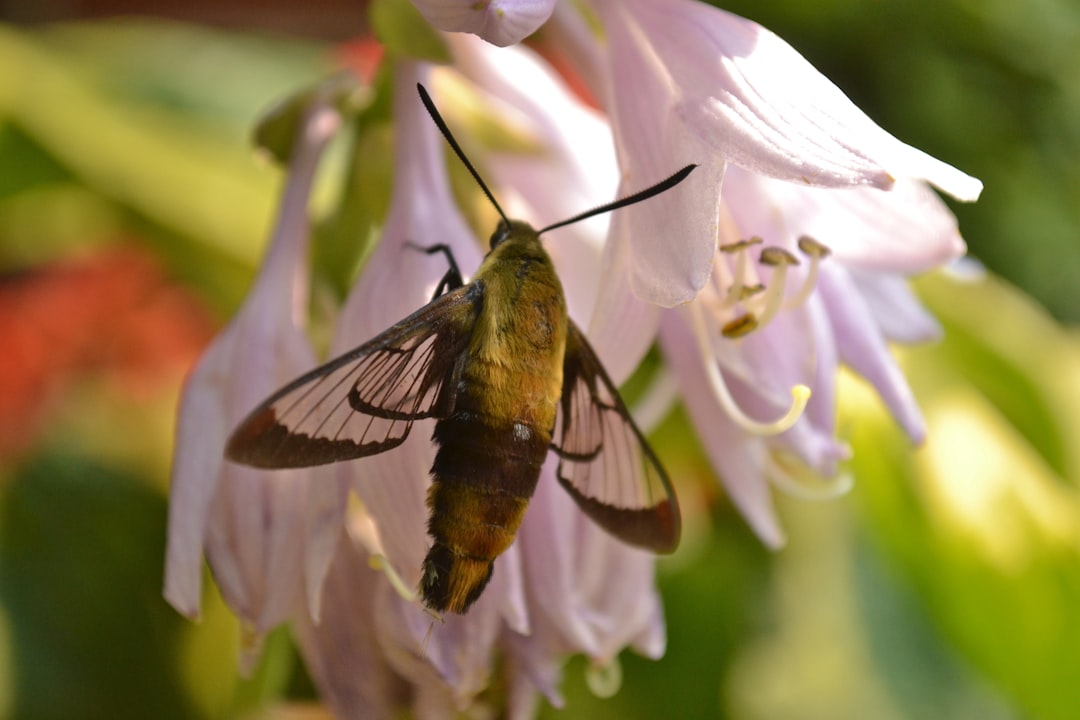
The hummingbird clearwing moth’s body structure is a masterpiece of evolutionary engineering. Its plump, olive-green body closely resembles a hummingbird’s torso, complete with a similar size and shape that immediately triggers recognition patterns in our brains. The moth’s wingspan ranges from about one and a half to two inches, placing it squarely in the size range of smaller hummingbird species.
Perhaps most striking are the moth’s transparent wings, which give it the “clearwing” part of its name. These wings lose their scales shortly after the moth emerges from its cocoon, leaving behind clear, glass-like membranes that beat at incredible speeds. The wing borders retain their reddish-brown coloration, creating a visual effect that’s remarkably similar to a hummingbird’s wing pattern.
The moth’s long, curved proboscis acts like a hummingbird’s beak, extending deep into flowers to reach nectar. This feeding appendage can be nearly as long as the moth’s entire body, and it’s kept coiled up like a spring when not in use.
Wings That Beat Like Thunder
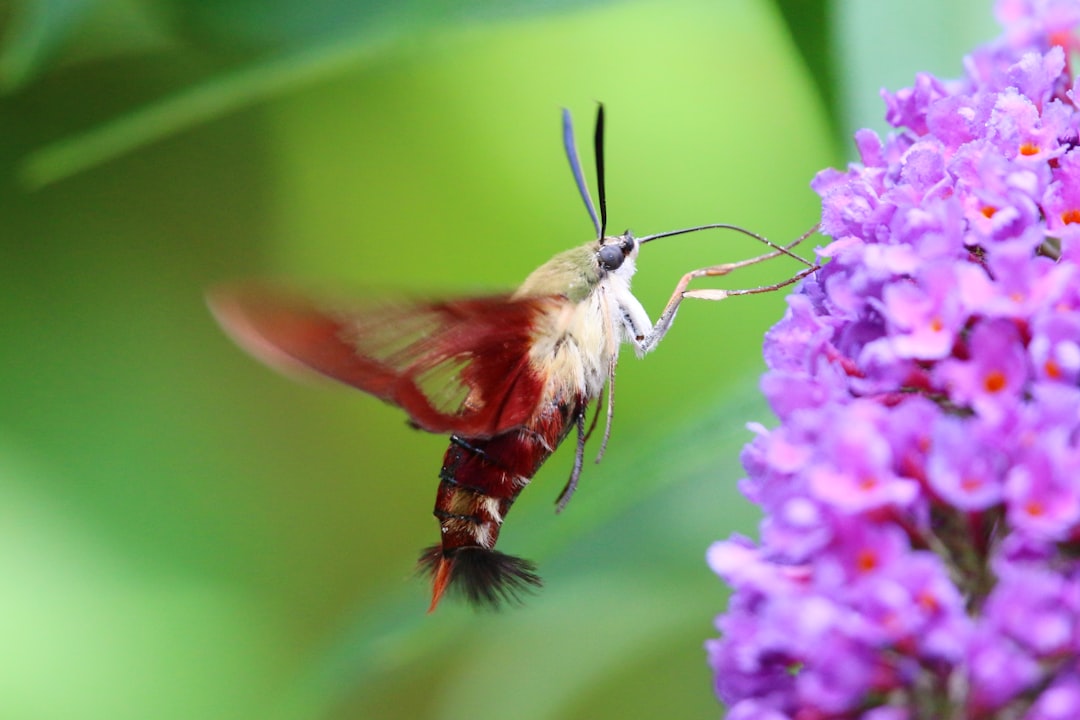
The speed at which these moths beat their wings is truly astounding and represents one of the most crucial elements of their hummingbird mimicry. Their wings flutter at approximately 70 beats per second, creating the characteristic humming sound that gives hummingbirds their name. This rapid wing movement generates enough lift to allow the moth to hover motionless in front of flowers, just like its feathered counterpart.
The wing-beating pattern creates a distinctive blur that our eyes interpret as hummingbird-like movement. This isn’t just coincidence – it’s the result of millions of years of evolution favoring moths that could successfully mimic hummingbirds. The sound produced by these rapidly beating wings is remarkably similar to that of an actual hummingbird, adding another layer to the deception.
Interestingly, the moth’s flight muscles make up a significant portion of its body weight, much like in hummingbirds. This adaptation allows for the sustained hovering flight that’s essential for both feeding and survival.
Feeding Behavior That Mirrors Nature’s Jewels
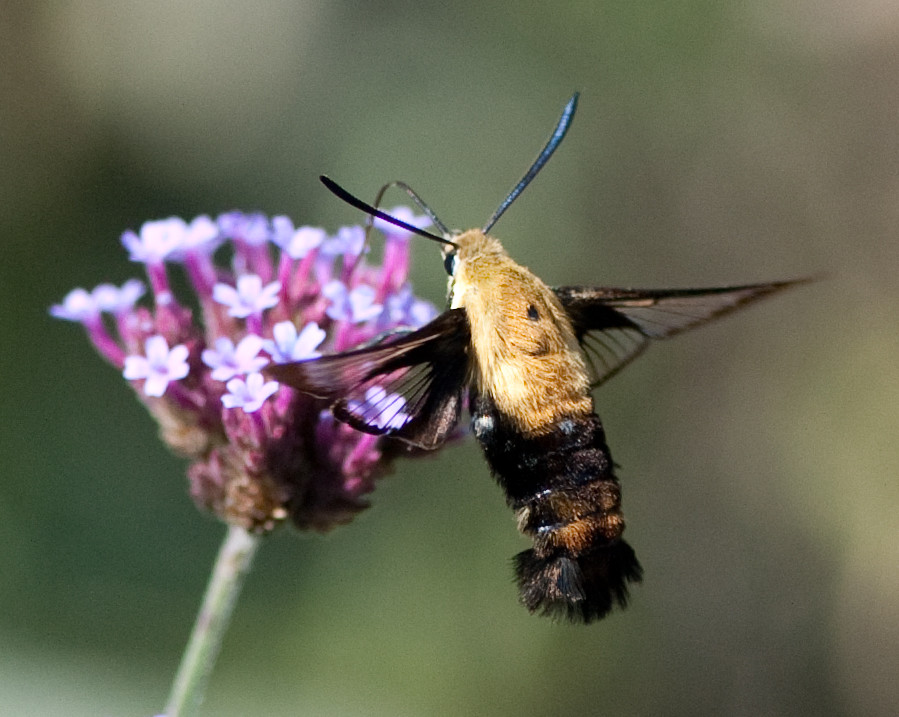
The feeding behavior of hummingbird clearwing moths is perhaps where the mimicry becomes most convincing. These moths are active during daylight hours, particularly in the early morning and late afternoon when hummingbirds are most active. They visit many of the same flowers that attract hummingbirds, including bee balm, wild bergamot, and honeysuckle.
Watching a hummingbird moth feed is like observing a perfectly choreographed dance. The moth approaches a flower, hovers steadily while extending its proboscis, takes what it needs, and then zips away to the next bloom. This behavior is so similar to hummingbird feeding patterns that even experienced birdwatchers often need a second look to confirm what they’re seeing.
The moth’s feeding style is incredibly efficient, allowing it to visit dozens of flowers in a single feeding session. Unlike butterflies, which often land on flowers, hummingbird moths maintain constant flight while feeding, just like their avian counterparts.
The Science Behind the Deception
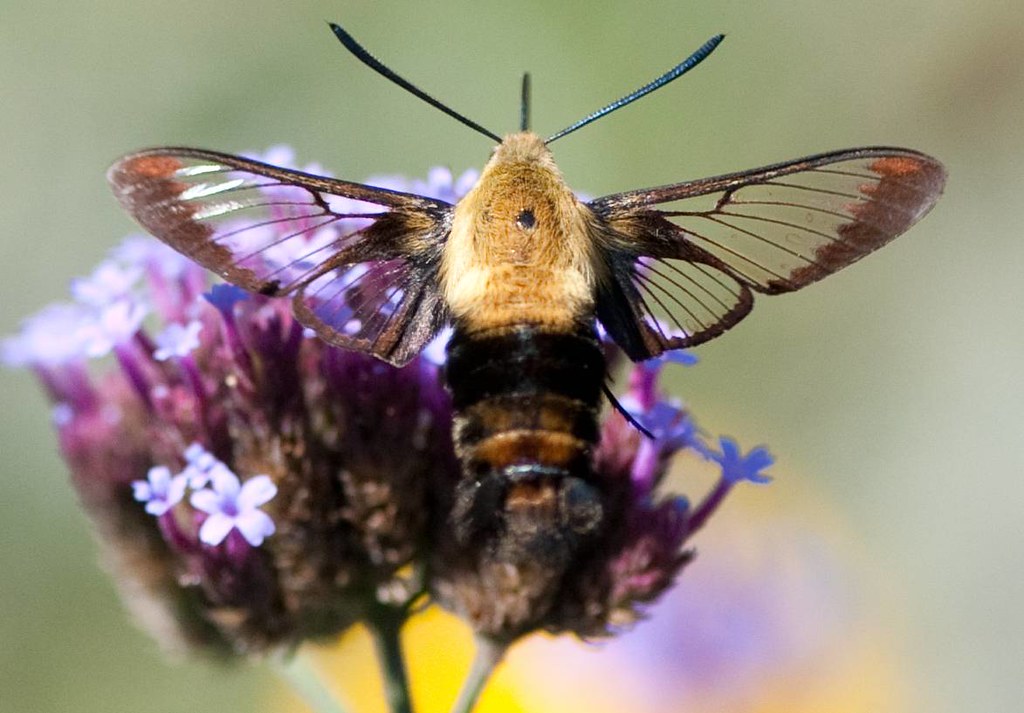
The phenomenon of hummingbird moth mimicry falls under a fascinating area of study called convergent evolution. This occurs when unrelated species develop similar characteristics in response to comparable environmental pressures. In this case, both hummingbirds and hummingbird moths evolved similar feeding strategies to exploit the same ecological niche.
Scientists believe this mimicry serves multiple purposes beyond just confusing humans. The resemblance to hummingbirds may provide protection from predators who mistake the moth for a much more formidable opponent. Birds that might normally prey on moths might think twice when faced with what appears to be another bird.
The timing of this evolutionary development is particularly interesting. Hummingbirds evolved in the Americas millions of years ago, and hummingbird moths likely developed their mimicry as a response to the success of these birds. This represents a classic example of how evolution can produce remarkably similar solutions to environmental challenges.
Geographic Distribution and Habitat Preferences
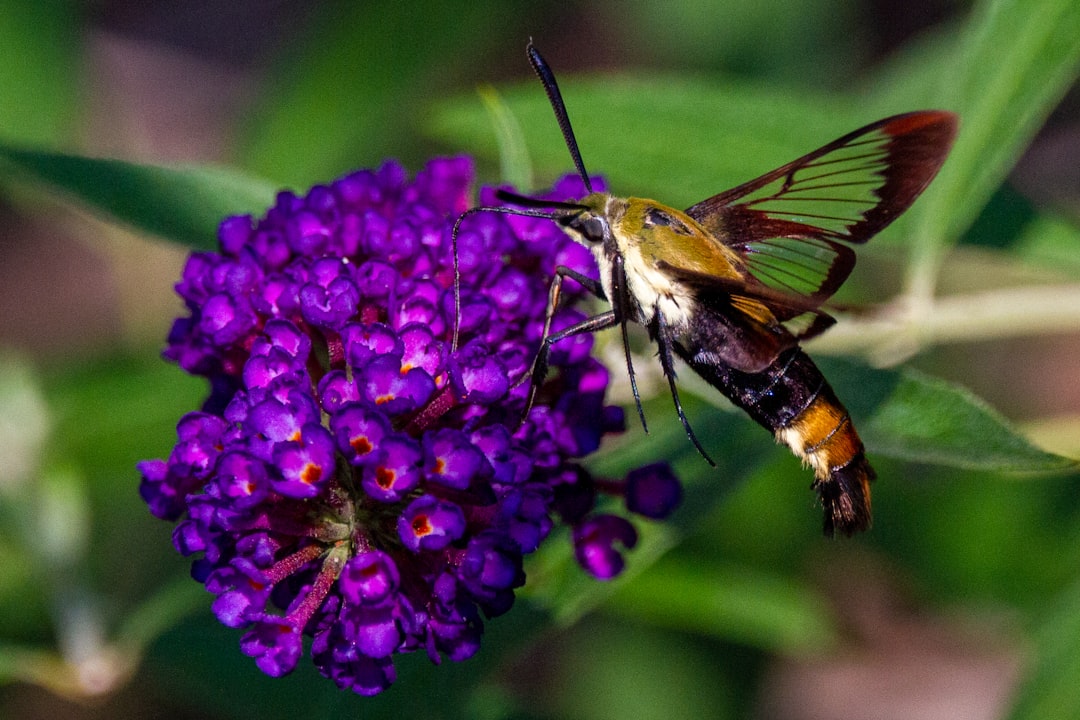
Hummingbird clearwing moths are found throughout much of North America, from Canada down to Florida and as far west as Alaska. They thrive in a variety of habitats, including gardens, meadows, forest edges, and parks. Their adaptability to different environments has contributed to their widespread distribution and success as a species.
These moths show a particular preference for areas with abundant flowering plants, especially those that produce nectar during daylight hours. Gardens with native wildflowers, herb gardens, and naturalized landscapes often provide ideal conditions for these remarkable creatures. The presence of host plants for their caterpillars is equally important for maintaining healthy populations.
Interestingly, different regions may have slightly different subspecies of hummingbird clearwing moths, each adapted to local conditions and flower types. This regional variation adds another layer of complexity to their already impressive mimicry abilities.
Life Cycle and Seasonal Patterns
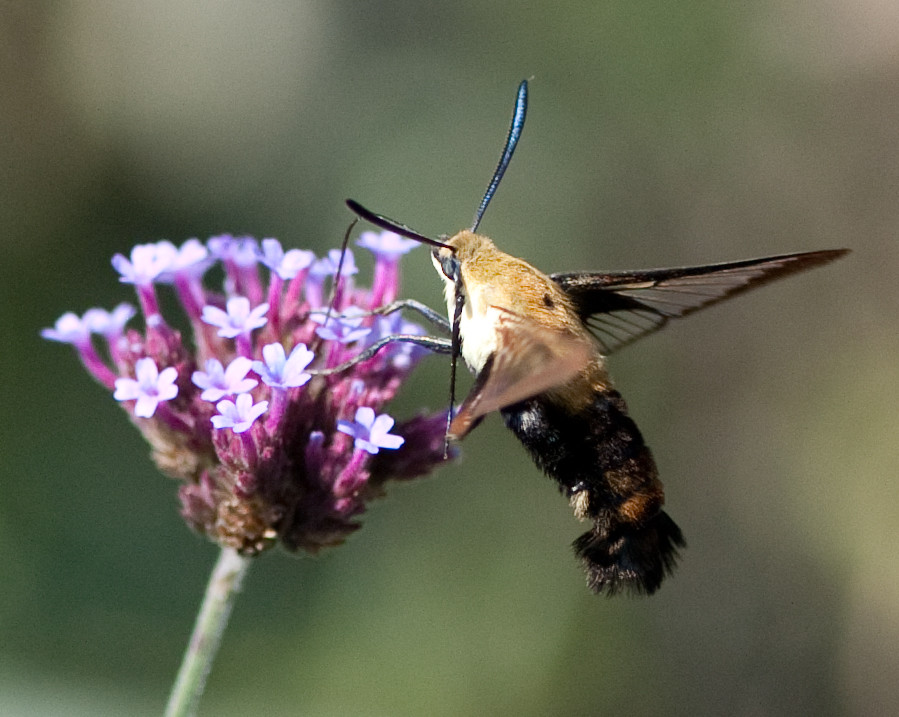
The life cycle of hummingbird clearwing moths is a fascinating journey that spans an entire growing season. Adult moths typically emerge in late spring or early summer, coinciding with the peak blooming period of many nectar-producing plants. This timing is crucial for their survival and reproductive success.
Female moths lay their eggs on the leaves of specific host plants, including members of the honeysuckle family, snowberry, and dogbane. The resulting caterpillars are quite different from their adult counterparts, appearing as typical hornworms with distinctive striped patterns. These larvae feed on their host plants throughout the summer, growing through several molts before pupating in the soil.
The pupal stage overwinters in the ground, and the cycle begins anew the following spring. In warmer climates, there may be multiple generations per year, while northern populations typically have just one generation annually. This seasonal pattern ensures that adult moths are active when flowers are most abundant and weather conditions are favorable.
Distinguishing Features for Keen Observers
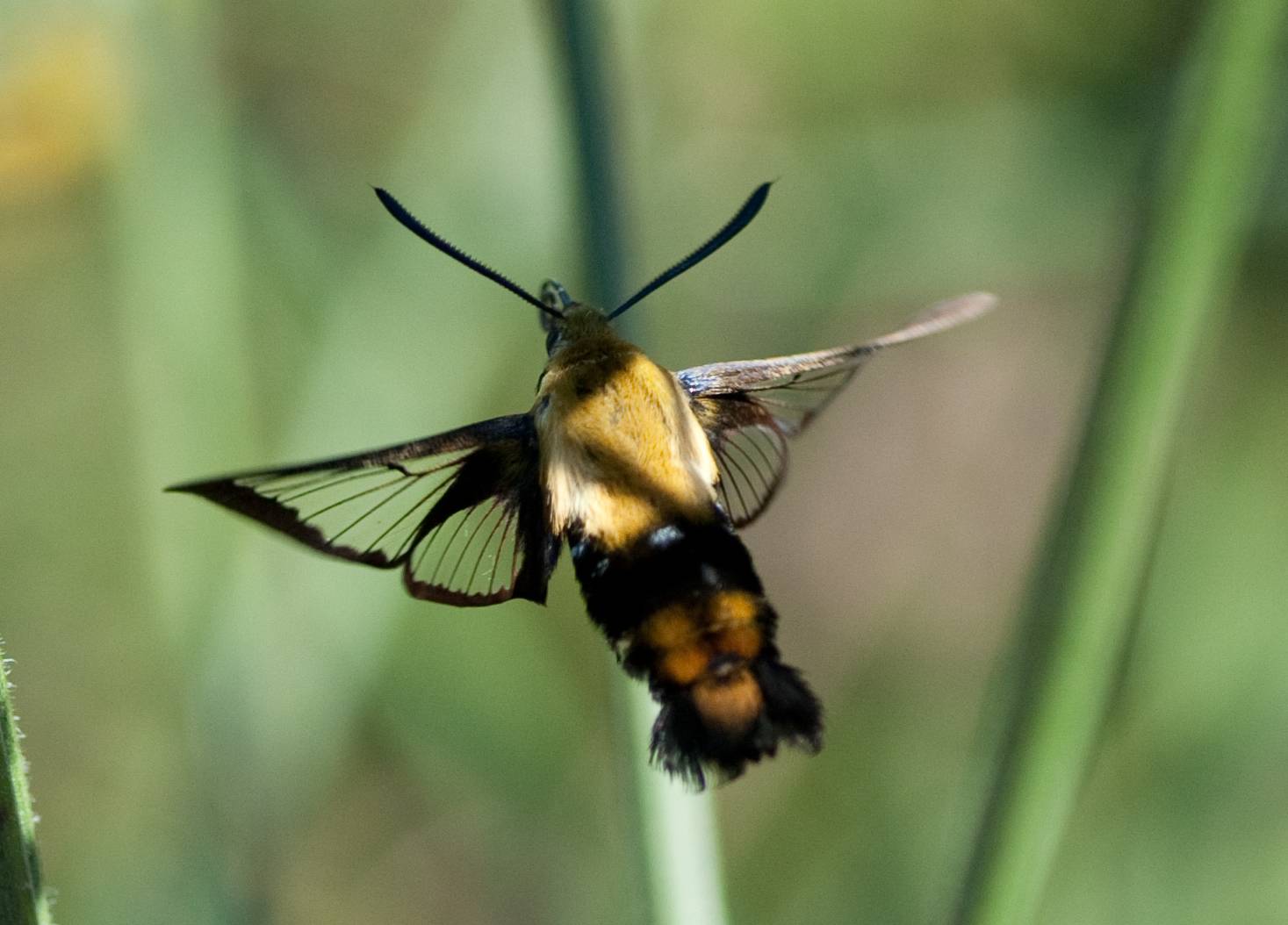
While the mimicry is remarkably convincing, there are several key differences that observant watchers can use to distinguish between hummingbird moths and actual hummingbirds. The most obvious difference is the antennae – moths have prominent, club-shaped antennae that are clearly visible during flight, while hummingbirds have tiny, barely noticeable beaks.
Body texture provides another clue. Hummingbird moths have fuzzy, hair-like scales covering their bodies, giving them a distinctly furry appearance. Real hummingbirds, of course, have smooth feathers that create a sleek, iridescent appearance. The moth’s eyes are also noticeably larger and more prominent than those of hummingbirds.
Flight patterns can also reveal the truth. While both hover expertly, hummingbird moths tend to have a slightly more erratic flight pattern and may pause more frequently between flowers. Their movements, while similar, often have a subtle difference in rhythm and flow that becomes apparent with careful observation.
The Role of Pollination in Ecosystems
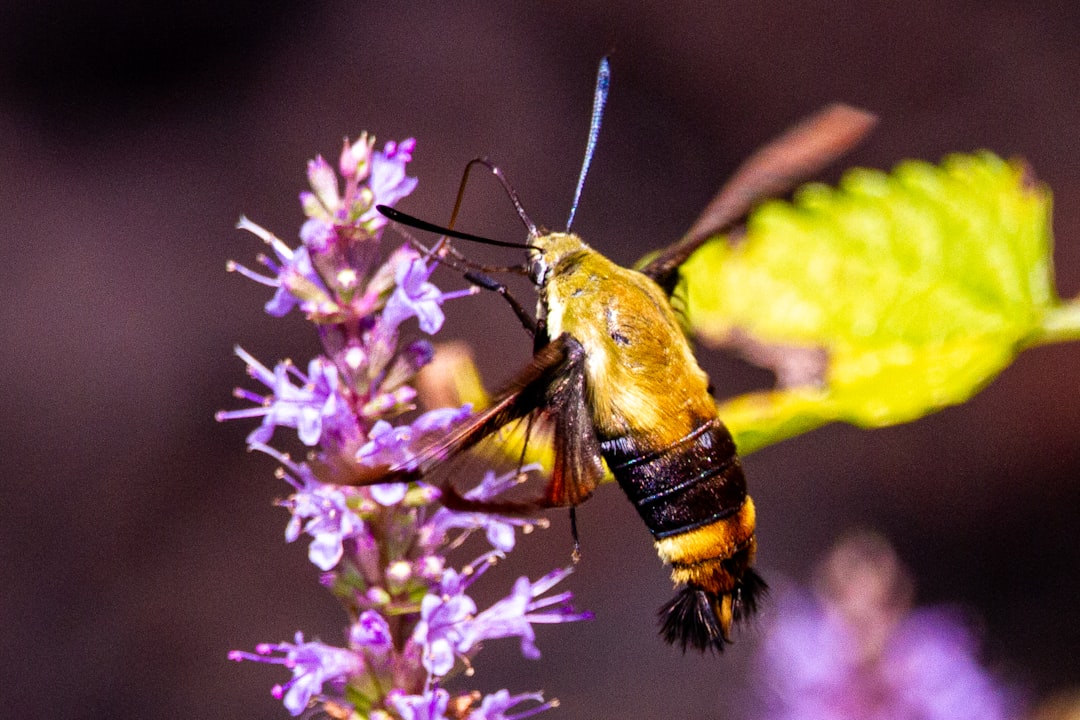
Hummingbird clearwing moths play a crucial role as pollinators in their ecosystems, often visiting the same plants that depend on hummingbirds for reproduction. This dual pollination service is incredibly valuable for maintaining plant diversity and ecosystem health. Many native wildflowers and garden plants benefit from the attention of both hummingbirds and their moth mimics.
The moths’ long proboscis and hovering ability make them particularly effective pollinators for tubular flowers. As they feed, pollen grains stick to their fuzzy bodies and are transferred from flower to flower, facilitating cross-pollination. This service is especially important for plants that bloom during the specific times when moths are most active.
Research has shown that some plants have evolved to attract both hummingbirds and hummingbird moths, maximizing their chances of successful pollination. This co-evolution has created intricate relationships between plants and their pollinators that demonstrate the interconnected nature of ecosystems.
Predators and Survival Strategies
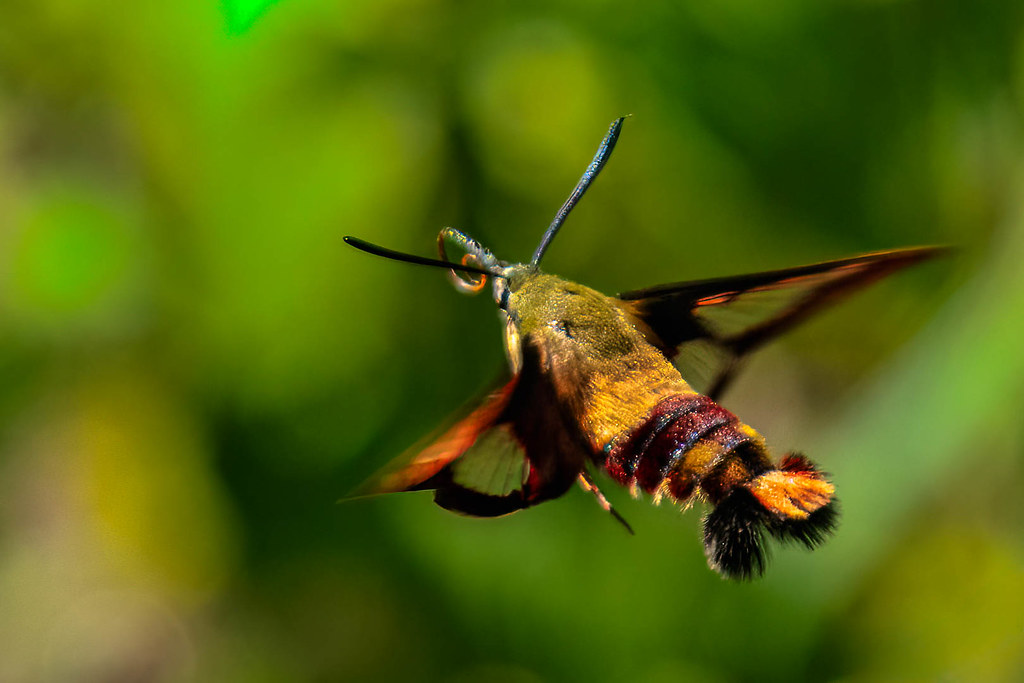
Despite their convincing hummingbird mimicry, clearwing moths face numerous threats from predators. Birds, spiders, and other insects all pose potential dangers to these remarkable creatures. The hummingbird mimicry likely provides some protection, as predators may be confused or deterred by the resemblance to a more formidable opponent.
The moths’ speed and agility serve as their primary defense mechanisms. Their ability to hover, dart quickly between flowers, and change direction rapidly makes them difficult targets for potential predators. The transparent wings may also provide some camouflage, making the moths harder to track against varied backgrounds.
Timing is another crucial survival strategy. By being active during daylight hours when many nocturnal predators are less active, the moths reduce their exposure to certain threats. However, this also puts them in competition with diurnal predators, making their hummingbird mimicry even more valuable for survival.
Conservation Status and Environmental Challenges

While hummingbird clearwing moths are not currently considered threatened species, they face many of the same environmental challenges affecting other pollinators. Habitat loss, pesticide use, and climate change all pose potential threats to their populations. The loss of native wildflowers and the conversion of natural areas to development particularly impacts these moths.
Gardeners and land managers can help support hummingbird moth populations by planting native flowering plants that provide nectar sources. Avoiding pesticide use, especially during daylight hours when moths are active, is crucial for their survival. Creating pollinator-friendly landscapes benefits not only these moths but entire ecosystems.
Climate change may affect the timing of moth emergence and flower blooming, potentially disrupting the delicate synchronization that these species depend on. Monitoring these relationships will be important for understanding and protecting these remarkable creatures in the future.
Cultural Impact and Human Fascination
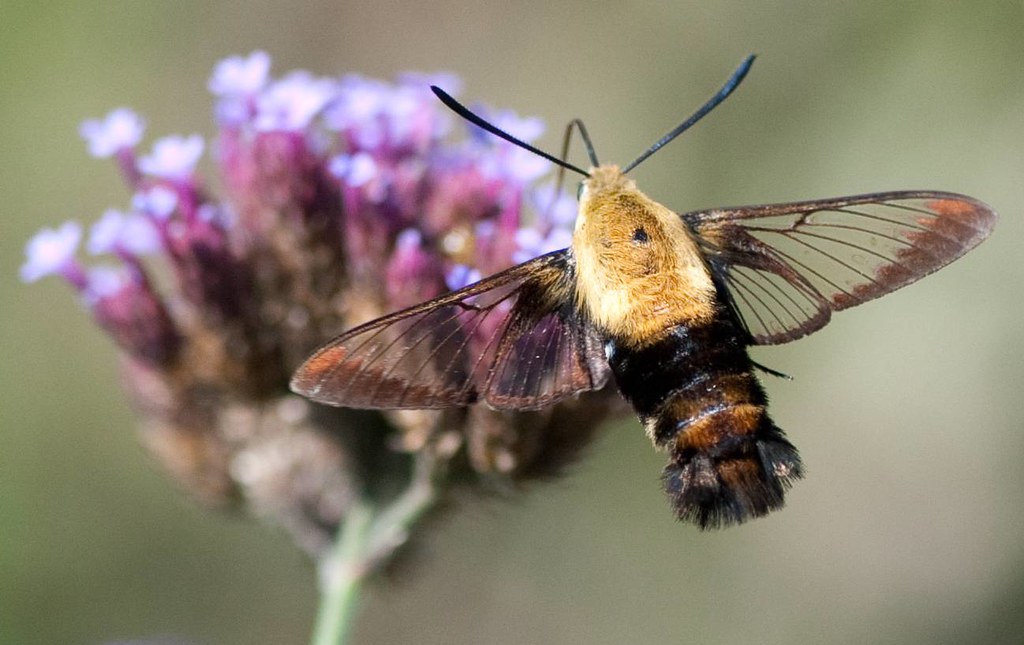
The hummingbird clearwing moth has captured human imagination in ways that few insects can match. Their resemblance to hummingbirds has made them favorites among nature photographers, gardeners, and wildlife enthusiasts. Social media is filled with videos of people discovering these moths in their gardens, often accompanied by expressions of amazement and delight.
Many people report that seeing a hummingbird moth for the first time is a transformative experience that deepens their appreciation for nature’s complexity and beauty. The moths serve as ambassadors for the insect world, helping people develop more positive attitudes toward creatures they might otherwise overlook or fear.
Educational programs often use hummingbird moths as examples of evolution, mimicry, and ecological relationships. Their story demonstrates how nature can produce seemingly impossible solutions to survival challenges, inspiring wonder and curiosity about the natural world.
Photography and Observation Tips
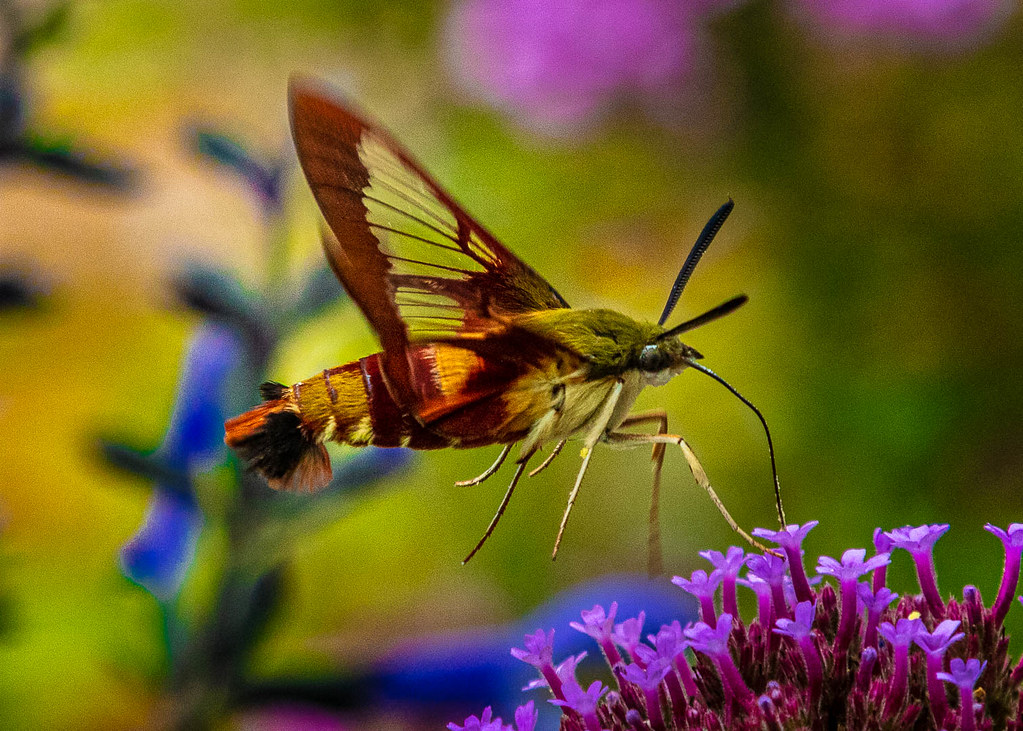
Capturing images of hummingbird clearwing moths requires patience and the right approach. These creatures are most active during warm, sunny days, particularly in the morning and late afternoon. Gardens with abundant flowering plants provide the best opportunities for observation and photography.
The key to successful moth photography is understanding their behavior patterns. Unlike many insects, hummingbird moths are relatively predictable in their feeding routes and timing. Once you identify their preferred flowers and feeding times, you can position yourself for optimal viewing and photography opportunities.
Using a telephoto lens helps maintain distance while still capturing detailed images. The moths’ rapid wing movement requires fast shutter speeds to freeze the action, while their hovering behavior provides opportunities for sharp, well-composed shots. Many photographers find that the moths become less wary with repeated exposure, allowing for closer observation over time.
Conclusion
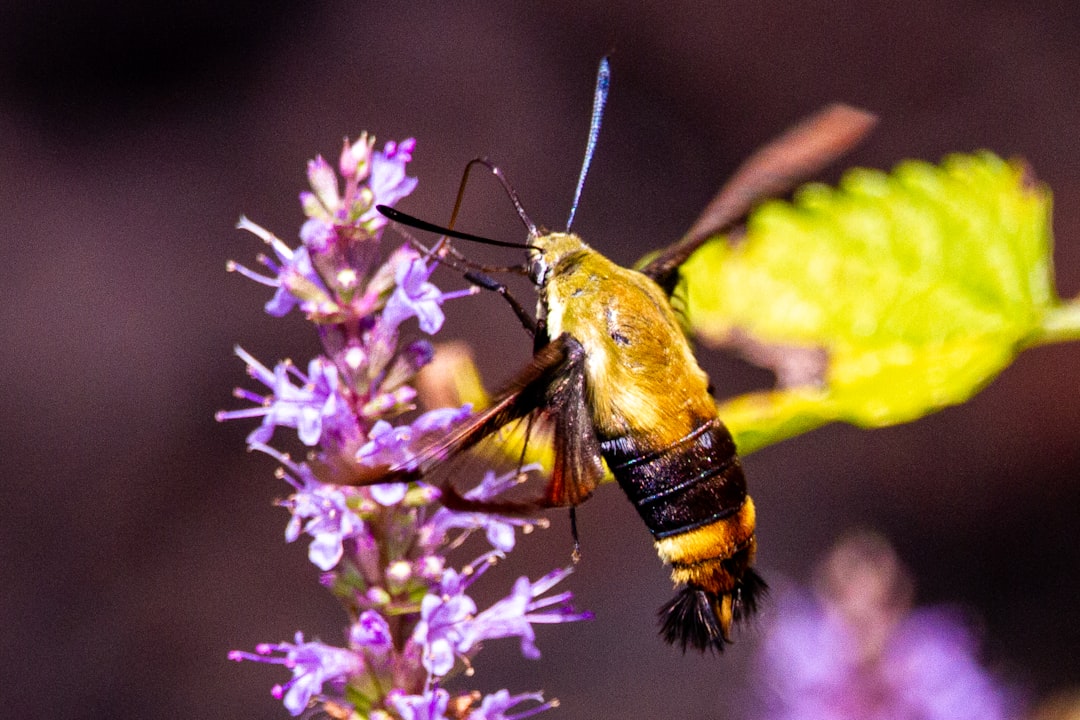
The hummingbird clearwing moth represents one of nature’s most remarkable examples of evolutionary mimicry, demonstrating how life finds extraordinary solutions to survival challenges. These incredible creatures have perfected the art of deception so completely that they routinely fool even experienced nature watchers, creating moments of wonder and discovery in gardens across North America.
Their success as hummingbird mimics highlights the intricate relationships that exist in nature, from the co-evolution of plants and pollinators to the complex predator-prey dynamics that shape behavior. By understanding and appreciating these remarkable moths, we gain deeper insights into the complexity and beauty of the natural world around us.
Next time you spot what appears to be a tiny hummingbird in your garden, take a closer look. You might just discover one of nature’s most talented performers, reminding us that the natural world is full of surprises waiting to be uncovered. What other creatures might be hiding in plain sight, perfecting their own versions of nature’s greatest magic tricks?

